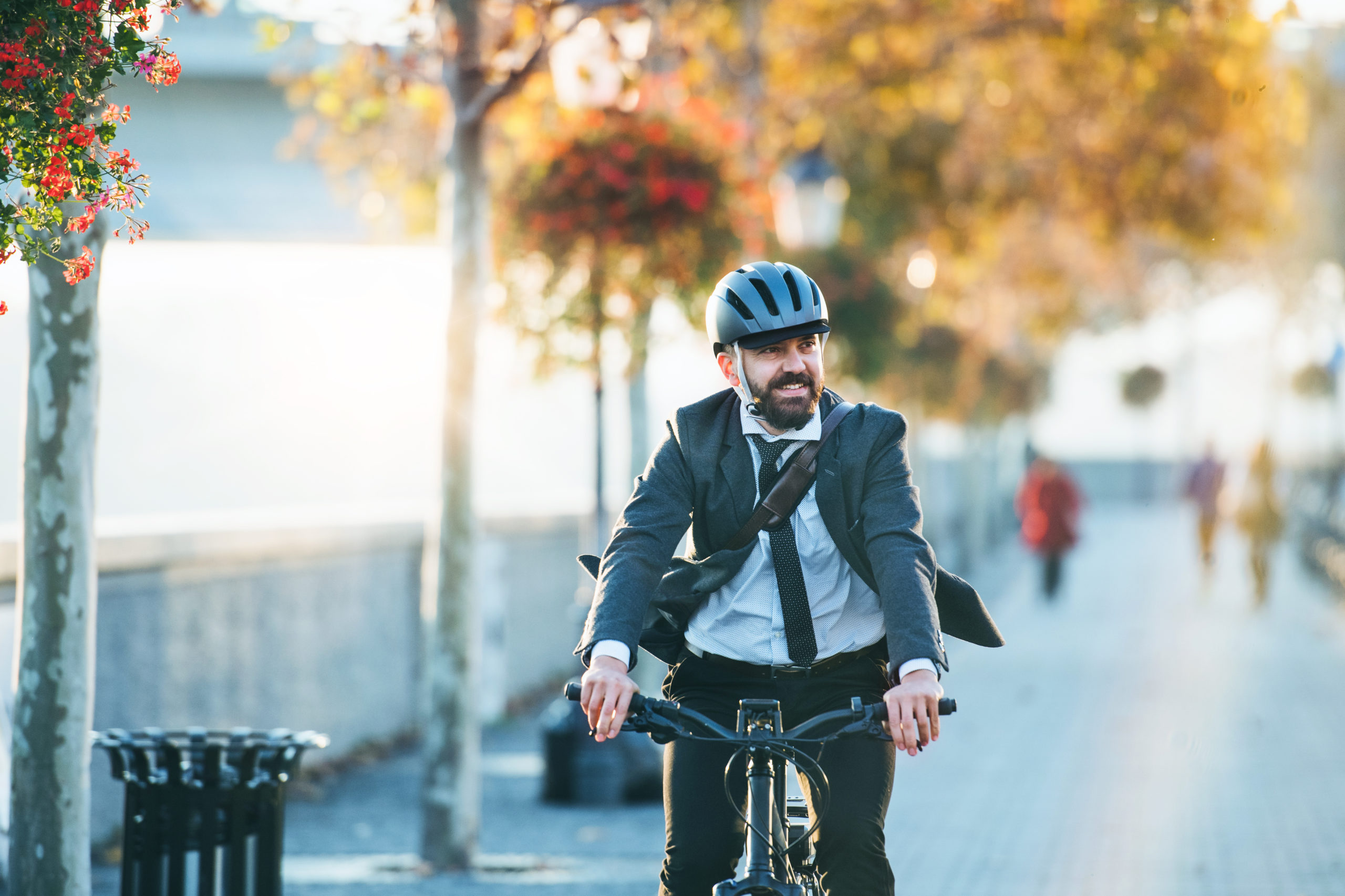The proportion of people who cycle to work will grow by one percentage-point in the next three years. It doesn’t seem much, does it? However, that equates to tens of billions of additional bicycle rides per year, according to research by Deloitte.
(And that forecast was back in December, before the Covid-19 pandemic and the resultant surge in cycling as everyone turns to bikes for their one hour of permitted out of home exercise every day).
So, why are more and more people set to get on their bikes? Well, it’s actually (in no small part) down to technology. In particular: electric bikes (or e-bikes).
The idea of a battery-powered bike has been around since 1895, but the current iterations are faster and easier (and cooler) than anything that’s come before them.
Basically, these are similar to regular bikes but there’s a battery and motor to help cyclists along. Those few watts are “transformational” though, as Kevin Mayne of Cycling Industries Europe, noted in an interview with the FT recently.
“Historically, we talked about cycling as a 5km solution. Now we’re talking about it as a 15km solution. That is transformational,” he said.

Lazy Dutch
Deloitte now reckons that 130m e-bikes will be sold globally in the next three years. In the UK, 70,000 of the 2.5m bikes sold in 2018 were e-bikes, which equates to 2.8%. Buyers were mostly technophile men under the age of 45.
In the Netherlands the figure is 400,000, or 68% of bike sales. A cynic might suggest the Dutch are simply lazier (and they don’t even have any hills).
Another way of looking at it is that a battery means that millions more people embrace the mode of transport that all readers of The Draft already know is the best.
Part of the lure is the fact they can sit in the saddle and zoom about with even breaking sweat. Think commuters cycling to work but with no access to showers in the heat of the summer. Or parents pedalling between soft plays and coffee shops with kids in tow.
“Electrically assisted bikes really increase the appeal of cycling to those groups who are currently a lot less likely to cycle – non-cyclists, women, older aged groups, those who live more than three miles away from work, people from non-white ethnic background, car owners or those who are relatively physically inactive,” said Frauke Behrendt, from the University of Brighton and principal investigator in the smart e-bikes project.
The bikes also “flatten the terrain”, she added, so going uphill didn’t feel as daunting.
Behrendt ran a short trial in Brighton, which 100 people were loaned the bikes for six to eight weeks. Those involved travelled an average of 15 to 20 miles a week on them; their car mileage fell by a fifth. And 70% would like to have them available all the time and would cycle more of this was the case.
Four wheels bad, two wheels good
Despite letting you cheat on the inclines, e-bikes still have health benefits. So, imagine the impact on obesity and heart disease rates if biking, even if it is assisted, became the preferred mode of transport for short distances?
The other massive benefit, of course, relates to pollution. The more people cycle, the fewer cars there are on the road and the cleaner the air becomes (just look at the impact this current lockdown has had on the air quality in central London).
The fact that e-bikes also encourage people to travel further means that road miles – those travelled by car – are reduced further. This is what actually makes e-bikes incredibly valuable as a weapon to tackle global warming – as a report for the Union Cycliste Internationale (UCI), the European Cyclists’ Federation (ECF) and the Bicycle Product Suppliers Association (BPSA) in 2015 showed.
At least 35% of the trips we tend to make are under 5km, so a 20-minute ride for the average Joe on a standard bike. Around 50% of the trips are under 10km, which takes less than 30 minutes on an e-bike. Currently, only 6% of these urban trips (globally) are completed by bike or e-bike. Most of these are in places like China, Japan, The Netherlands and Denmark. In London the figure is 5%.
“A number of such trips should be “cyclable” for many, or at least amenable to travel via e-bikes. The question becomes how to unlock this potential. If it can be unlocked, the benefits will be substantial,” the researchers said. Carbon emissions from urban transport could fall 10% and save cities $25 trillion £20 trillion) too.
Green energy
That report also showed that e-bikes are more efficient per passenger-kilometre than any other mode of transport (although rail might run them close during rush hour when efficiency if maximised).
Of course, e-bikes alone won’t be enough. You need cycling infrastructure, bike sharing schemes and ideally to penalise cars for movement within cities.
Swap your car for an e-bike and you are certainly going to reduce your carbon footprint (the amount of greenhouse gases related to each trip you do).
If the electricity you use is renewable, for example if your energy supplier is a company like Good Energy, then your e-bike becomes even more sustainable.
The only real drag currently is the battery, which in most models nowadays tends to be lithium-ion – the same type found in electric cars and smartphones. But increased demand for lithium to use in all these rechargeable batteries is a growing environmental problem (one which we’ll discuss in another blog).
Indeed, the best option, as always, is a traditional pedal bike. After all, what’s the fun in cycling if it isn’t hard going uphill?
Have a look at Yellow Jersey’s comprehensive electric bike insurance